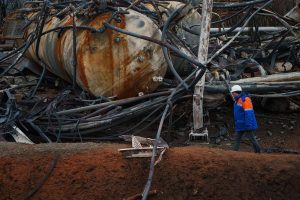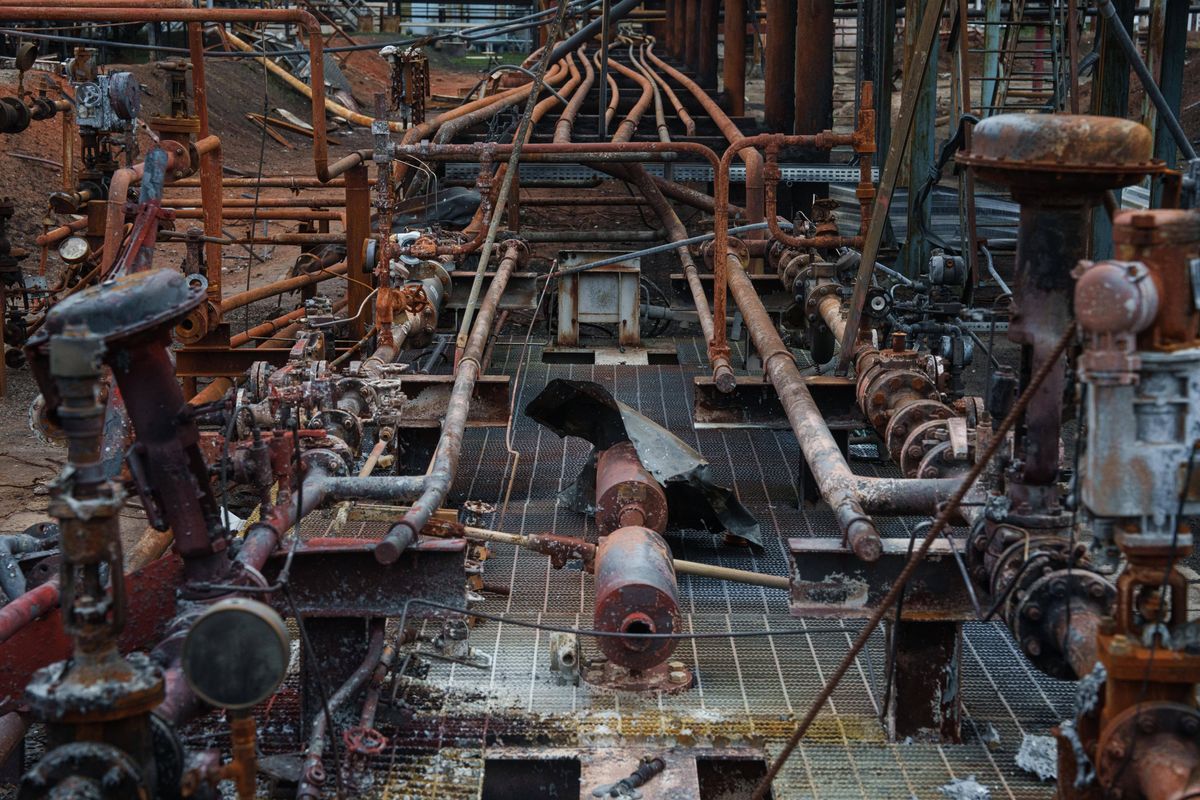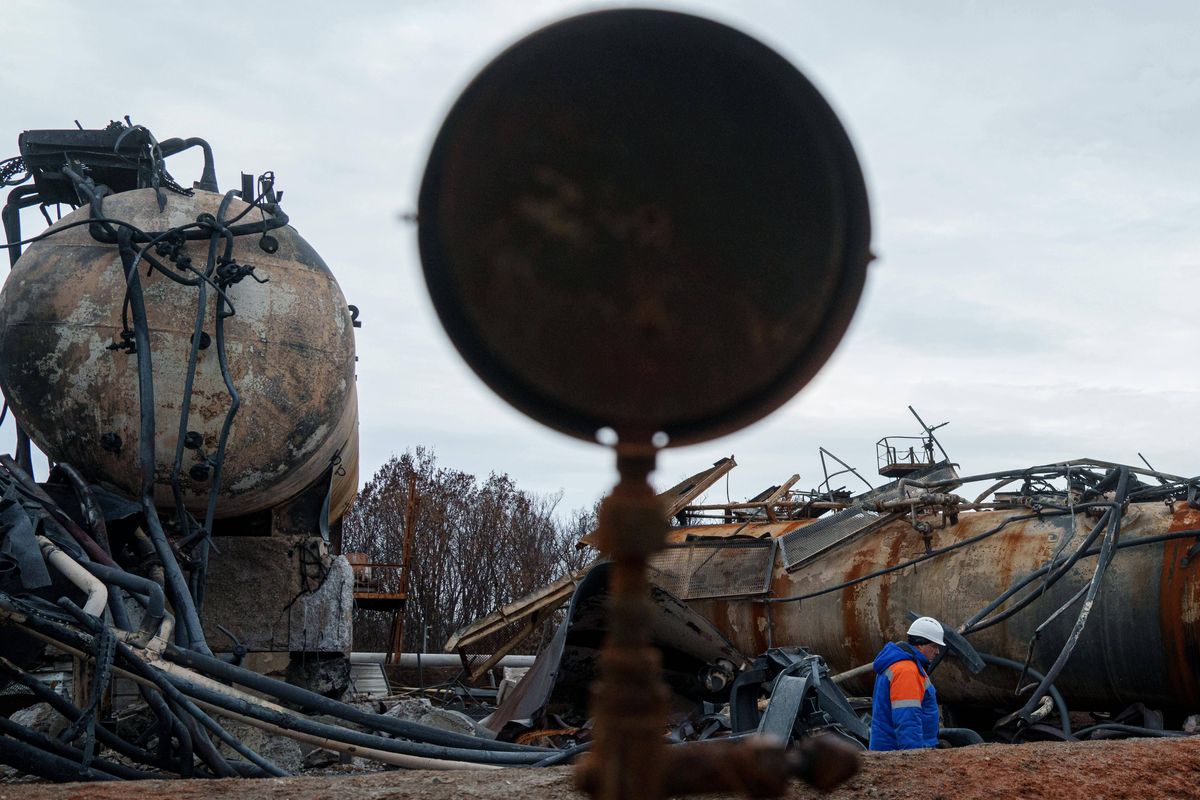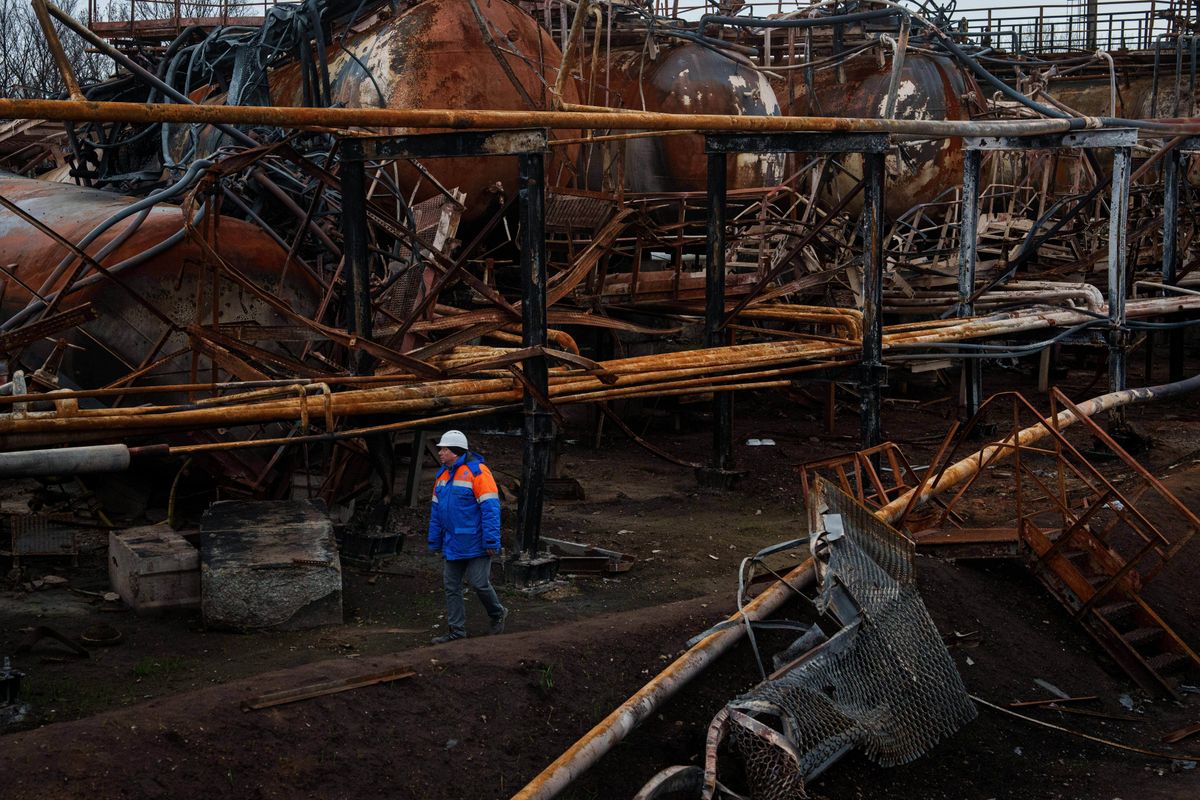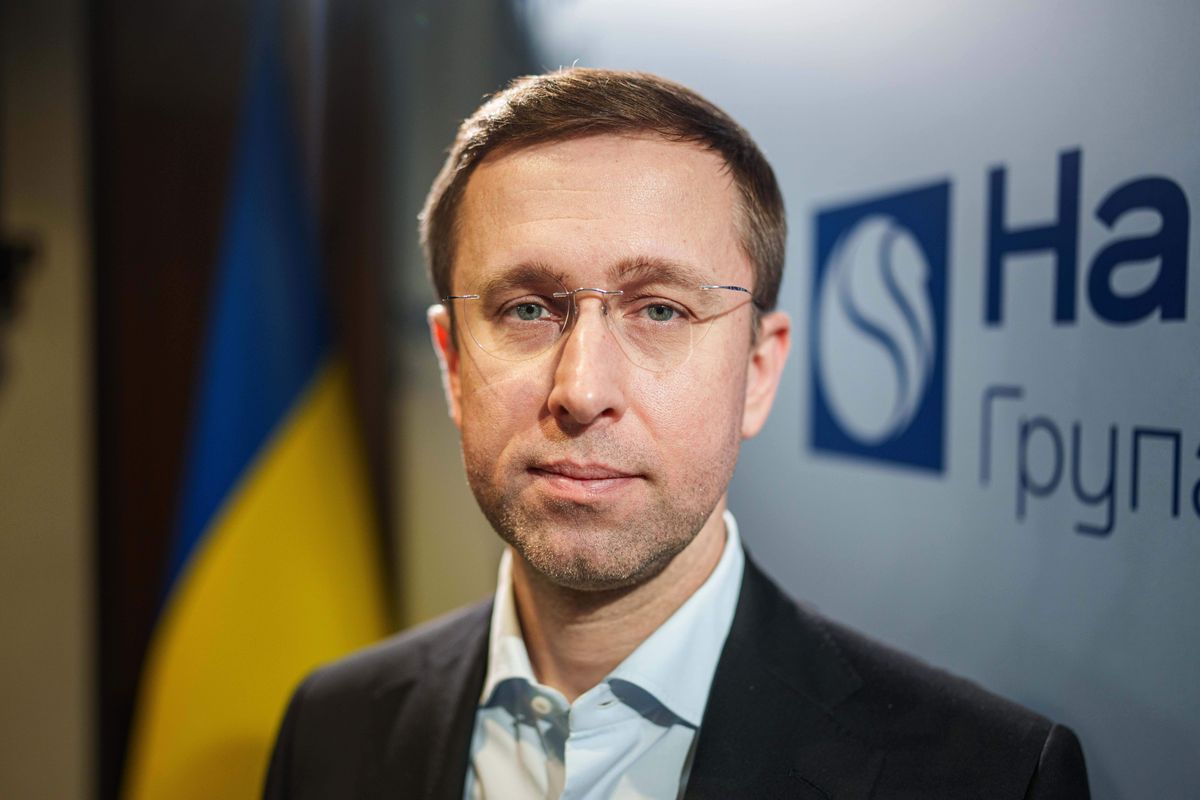KYIV, Ukraine (AP) — The soil surrounding the gas facility in Ukraine was once pitch-black before it was burned to a rusty red by a massive Russian drone and missile assault.
Scattered remnants of Shahed drones littered the reservoir designated for storing tanks of liquefied propane gas. Nearly a month after the Oct. 30 attack, several tanks lay empty and in ruins.
“It hurts to look at all this (damage) because I saw firsthand (the facility’s) establishment, construction and development,” said Victor, who has worked there for 28 years and who cannot be named in full for security reasons. “But we have, what we have and we must continue to work.”
The Associated Press gained exclusive access to Naftogaz’s gas extraction fields in central Ukraine last week. The AP is the first and only news outlet to be allowed to film and photograph war damage at the facilities. Due to strict security protocols, the AP cannot name the facility or its exact location.
Russia has targeted Ukrainian gas extraction this year in a bid to hurt morale and force Ukraine to import large quantities of expensive gas which it can ill afford. Without the attacks, Ukraine would be able to cover the overwhelming majority of its consumption using its domestic extraction.
Two devastating attacks on Ukraine’s gas extraction facilities in March and October mean the country must import an additional 4.4 billion cubic meters this winter.
To fill the gap, the Ukrainian state gas company, Naftogaz, said it is negotiating with U.S. government lenders to secure financing to buy American liquefied natural gas.
Ukraine’s energy crisis has played into the negotiations for a peace deal over the past week, a senior Ukrainian official told AP on condition of anonymity because they’re not authorized to speak to the media.
“It is urgent because of Ukraine’s energy situation, urgent because of what Ukrainians need this winter, urgent in terms of the fight,” the official said. The attacks on the country’s electricity and gas infrastructure are imposing heavy costs on Ukraine and its economy a scenario that could repeat next year if the war continues.
Gas is vital for Ukrainians to heat their homes in winters that can reach -20 Celsius (-4 Fahrenheit), as well as for centralized hot water systems. It is also essential for Ukraine’s industry and, in some cases, it’s used to generate electricity.
“Given that gas infrastructure has no relation to military needs, the destruction of gas extraction, gas storage, gas transportation has only one aim: manic terror attacks so that Ukrainians are left without gas, heating and electricity” said Serhii Koretskyi, Naftogaz’s CEO, in an interview in Kyiv on Friday.
Damage pushes up import costs
Ukraine’s domestic extraction facilities produce roughly 21 billion cubic meters of gas per year, according to the last published data from its energy regulator in 2023, before Russia began to attack gas infrastructure in earnest. Without attacks, it would still then need import 2 to 3 billion cubic meters a year, said Koretskyi.
But the second major attack in late October devastated extraction capabilities, meaning Ukraine needs to import an additional 4.4 billion cubic meters, at a cost of roughly $2 billion, said Koretskyi, noting that some parts of the extraction system had been successfully repaired.
Naftogaz has secured 70% of the money needed for the 4.4 billion cubic meters, mostly through European loans and a few grants, said Koretskyi. He said they are trying to obtain the remaining 30% through a loan from the U.S. International Development Finance Corporation and EXIM, another US government lender.
But Naftogaz has not previously borrowed from the U.S. and time is of the essence. “This money was needed the day before yesterday. It takes time to buy it, bring it, deliver it, pump it, release it,” said Koretskyi.
Naftogaz is currently importing 25-30 million cubic meters per day, learning from the experience of previous years to avoid spiking prices for Ukraine and inside Europe with big, sudden purchases, Koretskyi said.
Pipes left as tangled wreckage
The attack on the facility in central Ukraine involved several missiles and drones, unleashing a fire that extended over 100 meters (328 feet). Workers rushed to salvage what they could. Shrapnel had pierced the gas transport pipes, leaving them in a tangled heap.
“After the explosion, (the tanks) caught fire and continued to burn and explode, as a result of which the metal structures collapsed, flew around,” said Victor.
Naftogaz employees say Russian attacks on their production and refining facilities have been constant since the full-scale invasion. But the two major bombardments in March and October forced Ukraine to increase gas imports as some repairs can take months, if not years, because of the difficulty in obtaining spare parts.
The employees suggested that the Russians likely aimed for the LPG reservoir, intending to ignite a fire large enough to obliterate the facility.
Naftogaz’s borrowing for this winter has been unavoidable because of the attacks on gas infrastructure, said Koretskyi. But with no end to Russian attacks in sight, some Ukrainian gas experts say the government must raise gas prices so that Naftogaz – and in turn the Ukrainian state – doesn’t have to rely on raising large loans year-on-year.
But this carries the risk of stirring up anger at a time when Ukraine’s government is already under pressure from a major corruption scandal in the energy sector.
Raising the price “in these conditions is difficult,” Koretskyi said, adding that President Volodymyr Zelenskyy and Ukraine’s government, who decide the price, had closed the question for this winter.
Politically sensitive subsidies
Ukraine took several steps to bring its gas market in line with European Union requirements after it signed an EU association agreement in 2014. But Russia’s full-scale invasion in 2022 halted its effort on the most crucial element: sustained market prices for households.
At present, the state covers around 50% of the real market price, according to the country’s memorandum with the International Monetary Fund published in July. This means Naftogaz is not making any money from gas sold to household consumers.
“As long as this issue (of subsidies) is not resolved, there will be a financial hole in the liquidity and in the operational results of Naftogaz,” said energy expert Victoria Voytsitska, a Ukrainian lawmaker from 2014 to 2019 and member of the think tank We Build Ukraine.
Ukraine’s top leadership was too consumed by the prospect of future elections to introduce what will be a controversial reform, she said. “Naftogaz continues to be a hostage to his (Zelenskyy’s) unwillingness to take unpopular steps during the wartime,” she added.
Former Naftogaz CEO Yurii Vitrenko, a gas expert, estimates at least 30% of the population can afford to pay market prices for gas, electricity and heating, while the rest can apply for support. Vitrenko added that if the government gave payments direct to consumers, it could motivate people to use less gas in order to keep more of the money.
“It would result in Ukraine having to import less gas,” he said. However, he cautioned, “It should be done thoughtfully, being mindful of the need to maintain social cohesion”.
By ISOBEL KOSHIW, SAMYA KULLAB, VASILISA STEPANENKO and VOLODYMYR YURCHUK
Associated Press

